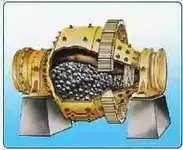All of the following information is for any reader here who doesn't already know it (or, perhaps not know ALL of it).
I co-wrote a very detailed Educational article on how to determine with CERTAINTY whether or not a metal ball is an Artillery ball (a cannon ball, a Grapeshot ball, or a Canister-ammo ball).
SolidShotEssentialsMod
Here is a very-shortened summary of it:
Artillery-Ball Test #1- No actual Artillery balls had flat spots, a raised band, grooves, bumps on them. None were out-of-round... meaning, none were egg-shaped (not even "slightly" egg-shaped) or lumpy -- they were as perfectly round as a glass marble.
Artillery Ball Test #2- The civil war era US (and CSA) Ordnance Manual tells the VERY-EXACT diameter and weight (such as 4.52 inches in diameter and 12 pounds 4 ounces) of Artillery balls used in America from the Revolutionary War through the civil war (1861-1865). Because there are literally multimillions of Civilian-usage balls (such as Stonemilling Industry rock-crusher balls, large ball-bearings, and Ornamental Ironwork balls), we Artillery ball collectors must super-precisely measure a metal ball's exact size and weight to see if it matches up with any of the Ordnance Manual's extremely precise size-&-weight data charts.
www.civilwarartillery.com/shottables.htm
If there is no match-up, the ball is definitely not an Artillery ball.
About Fyrffytr1's metal balls:
His ball #2 has a large flat spot on it, so it is definitely not an Artillery ball.
His ball #1 is a perfect sphere. So, it passes Test #1. However, it fails Test #2. As Fyrfftyr1's photos show, its precisely-measured diameter is 2.085-inches, and its precise weight is 1 pound 5.2 ounces (1.325 pounds). There is not even a "close" match-up for it in the Ordnance Manual's precise size-&-weight charts.
Additional reason neither of those two balls is an Artillery ball:
The "Solid-Shot Essentials" article includes a third test:
Artillery Ball Test #3: No Artillery balls used in America were made of Steel. The only form of iron used for them was cast-iron. Steel is approximately 10% to 15% heavier than cast-iron.
Both of Fyrffytr1's metal balls are 10-to-15% heavier than they should be (for their size) if they were cast-iron. Therefore, they are made of steel, and thus they are definitely not Artillery balls.
A personal note:
Being a relic-digger myself, I naturally "want" a fellow digger's metal balls to be Artillery balls. But I must not allow my personal feelings to bias my analysis of a metal ball (or any other relic). I've got to do the testing/analysis with a scientist's strictly-unbiased mindset. We do want to discover (with certainty) the actual True Identity of the metal ball (or other relic), don't we? That is what I try to help y'all do, in my posts here at T-Net, and the "Solid-Shot Essentials" article on the internet, and the articles I write for the North/South Trader's Civil War magazine.

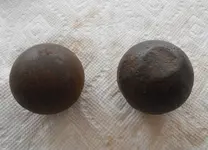
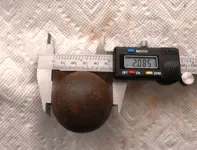
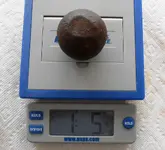
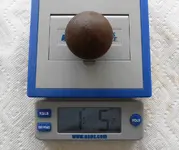
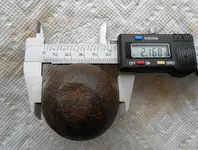
 Any idea what they may be?
Any idea what they may be?
